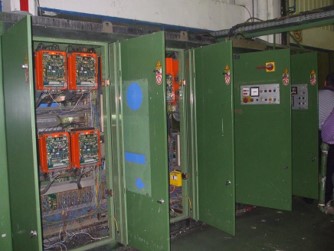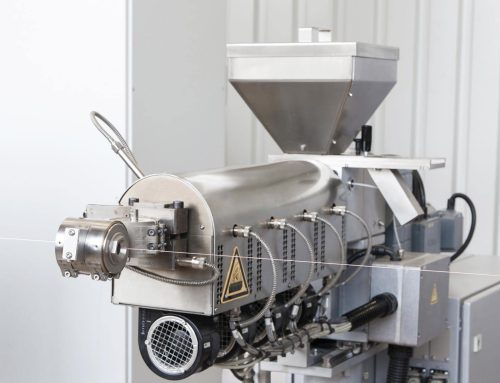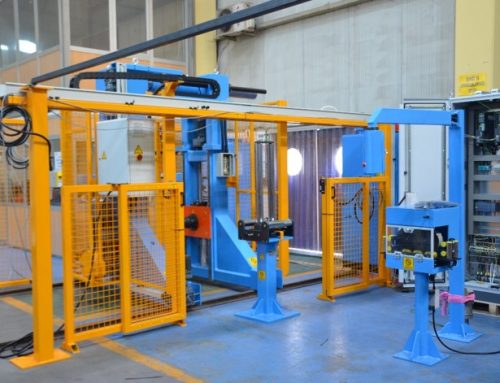As industries continue to demand higher standards for efficiency, performance, and durability, choosing the right cable wire manufacturing machine becomes a strategic decision that can impact the long-term success of any cable production company. Selecting the right equipment isn’t simply about finding a machine that meets today’s operational needs. Rather, it’s about investing in machinery that will provide robust performance, adaptability to market demands, and economic longevity. With the right choice, manufacturers can optimize production, improve profitability, and ensure sustained growth.

This may interest you From Wires to Wonders: A Behind-the-Scenes Look at Modern Cable Manufacturing Machines
1. Understanding the Basics: Types of Cable Wire Manufacturing Machines
Cable manufacturing machines are complex systems designed to carry out specific functions in the cable production process. Different machines are used in each stage of cable production, from drawing wire to insulation, coating, braiding, stranding, and final inspection. Here’s a brief overview of some commonly used machines in cable manufacturing:
- Wire Drawing Machines: These machines stretch metal to form thinner wires of the required diameter, which serves as the base for creating different types of cables.
- Extrusion Machines: Extruders are used to coat the wire with insulating materials such as plastic or rubber. Proper insulation is vital for safe electrical conduction.
- Twisting and Stranding Machines: Used for combining multiple strands of wire into a single cable, these machines twist individual wires together to improve conductivity and durability.
- Braiding Machines: These machines are essential for producing shielded cables, which require a braided outer layer to reduce electromagnetic interference.
- Testing and Quality Control Machines: These units test finished products for electrical conductivity, insulation resistance, and other crucial parameters.
2. Defining Production Needs: Customization and Scalability
Before investing in a cable manufacturing machine, it’s crucial to identify and evaluate specific production needs, keeping customization and scalability at the forefront. Here’s why each matters:
- Customization: Different industries require different cable specifications. For instance, cables for automotive applications might differ vastly from those needed for telecommunications. Machines that can be customized to accommodate different wire sizes, insulation materials, and production speeds are preferable, as they allow manufacturers to serve a diverse range of industries.
- Scalability: As market demands change, manufacturers may need to scale up or modify production. Machines with scalable options (such as additional modules for higher output or compatibility with new materials) are a wise investment. Ensuring your machine can adapt to future demands will help reduce costs associated with purchasing new equipment every time production needs change.
3. Prioritizing Energy Efficiency and Sustainability
With rising global energy costs and a growing emphasis on environmental sustainability, choosing an energy-efficient manufacturing machine is a critical factor for long-term success. Not only can energy-efficient machinery reduce operational costs, but it also contributes to a smaller environmental footprint. Here’s what to look for in terms of efficiency and sustainability:
- Energy Consumption Metrics: Machines that consume less power without sacrificing performance contribute to a lower cost per unit produced. Look for machines with a strong energy rating or those that offer energy-saving modes during idle times.
- Material Efficiency: The machine should be designed to minimize material waste during production. Modern extrusion machines, for instance, are often engineered to apply insulation with extreme precision, reducing material wastage and cutting down on production costs.
- Green Manufacturing Compatibility: In line with industry trends, many manufacturers now prioritize machines that support eco-friendly materials, such as recyclable insulation or biodegradable components. Some manufacturers even provide machines that are optimized for recycled materials, which can be a significant cost-saving and sustainable measure.
4. Ensuring Quality and Reliability
Quality and reliability in cable manufacturing directly affect the durability and performance of the final product, making these factors non-negotiable when selecting machinery. Reliable machines reduce downtime, lower maintenance costs, and ensure a consistent output. Key factors to consider include:
- Precision: Machines that offer advanced control systems and automation features provide superior accuracy and consistency. Look for options that offer digital interfaces, real-time monitoring, and micro-adjustment settings to maintain uniformity in cable size and insulation thickness.
- Build Quality: A well-built machine from a reputable manufacturer is more likely to offer prolonged service and withstand continuous operation. High-quality components, such as robust bearings, stainless steel parts, and corrosion-resistant elements, contribute to the machine’s lifespan and reliability.
- Testing and Quality Control Features: Machines with integrated testing features allow for early detection of defects, helping ensure product quality. In-line testing capabilities can detect issues like insulation flaws or inconsistencies in wire thickness in real-time, reducing post-production rework and wastage.

5. Automation and Technological Advancements
Automation is transforming the manufacturing industry, and cable manufacturing is no exception. Advanced machines equipped with automation technology can enhance efficiency, reduce human error, and support higher productivity. Consider the following when looking at automation features:
- Automated Control Systems: Machines with automated control systems and programmable logic controllers (PLCs) streamline the manufacturing process by reducing the need for manual adjustments and human intervention. This improves overall efficiency and ensures consistent production quality.
- AI and Machine Learning Integration: Some of the latest cable manufacturing machines incorporate AI and machine learning algorithms, enabling predictive maintenance, adaptive production processes, and improved quality control. Predictive maintenance helps identify potential issues before they cause downtime, optimizing machine uptime and reducing repair costs.
- Remote Monitoring and Diagnostics: Machines with IoT integration allow operators to monitor performance metrics and diagnostics remotely. This capability can be especially valuable for larger-scale operations where multiple machines are involved, enabling centralized oversight and rapid troubleshooting.
6. Maintenance, Serviceability, and Support
The importance of machine serviceability and manufacturer support cannot be overstated. Regular maintenance and prompt support reduce the likelihood of extended downtimes, maintain quality, and extend the life of the machine. Factors to keep in mind include:
- Ease of Maintenance: Machines that are designed for easy maintenance — with accessible components and straightforward maintenance schedules — minimize downtime and reduce labor costs associated with repairs.
- Manufacturer Support and Warranties: Reputable manufacturers typically offer comprehensive support services, including installation assistance, training, and ongoing technical support. Additionally, machines with extended warranties provide extra assurance, reducing financial risk.
- Availability of Spare Parts: Before purchasing, check the availability and cost of spare parts. Opt for machines from manufacturers who offer reliable and easily accessible parts, which will make repairs more manageable and prevent prolonged downtimes.
7. Budget and Return on Investment (ROI)
While high-quality cable manufacturing machines come with significant upfront costs, evaluating long-term ROI is essential. A machine with a higher initial price but superior durability, efficiency, and production speed may ultimately be more cost-effective. Key considerations for assessing ROI include:
- Production Efficiency and Output Rates: Machines that offer higher output rates and faster cycle times increase productivity, allowing for quicker project turnarounds and higher revenue potential.
- Operational Costs: Evaluate the total cost of ownership, which includes energy consumption, maintenance, labor, and replacement parts. Opting for energy-efficient, low-maintenance machines reduces these recurring costs, providing savings over the long term.
- Resale Value: Some premium machines retain better resale value over time, especially if they are from a reputable brand. Machines that can be easily upgraded or adapted to new industry standards may also retain value longer, providing a financial buffer should you decide to sell or trade the equipment.

8. Compliance with Industry Standards and Regulations
Cable manufacturing is a highly regulated industry with stringent standards for safety, environmental impact, and product performance. Ensuring compliance is not only necessary for legal reasons but also bolsters the reputation of the manufacturer. Here are the critical areas of compliance:
- Safety Standards: Machines should meet industry-specific safety standards, such as those set by organizations like the International Electrotechnical Commission (IEC) or the American National Standards Institute (ANSI).
- Environmental Regulations: Many countries enforce strict regulations on emissions, waste disposal, and energy usage. Choosing machines that meet environmental standards will help avoid potential fines and support green business initiatives.
- Product Quality Standards: Ensure that the chosen machines can produce cables that meet quality standards, such as those from ISO (International Organization for Standardization), which can significantly enhance product credibility and market acceptance.
Conclusion: Making an Informed Decision for Long-Term Success
Choosing the right cable wire manufacturing machine is a multifaceted decision that demands a clear understanding of production needs, scalability, quality, energy efficiency, and compliance. By thoroughly evaluating these key factors, manufacturers can make a choice that aligns with both immediate operational goals and long-term strategic objectives.
Investing in a quality machine with the right capabilities positions cable manufacturers to meet evolving market demands, maximize operational efficiency, and stay competitive. Taking a thoughtful, well-researched approach ensures not only immediate production success but also lays the foundation for sustained growth and profitability in an ever-advancing industry.



